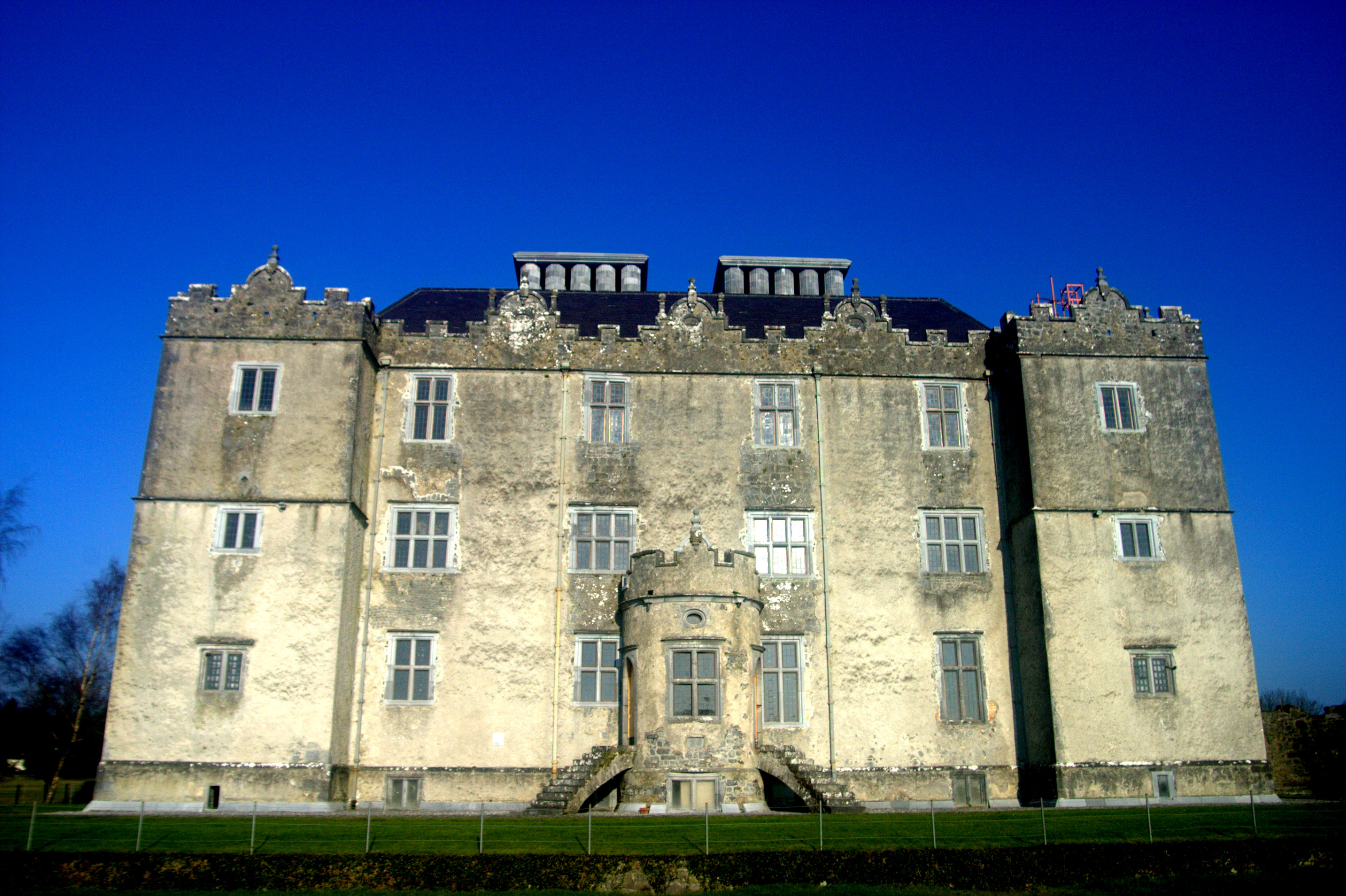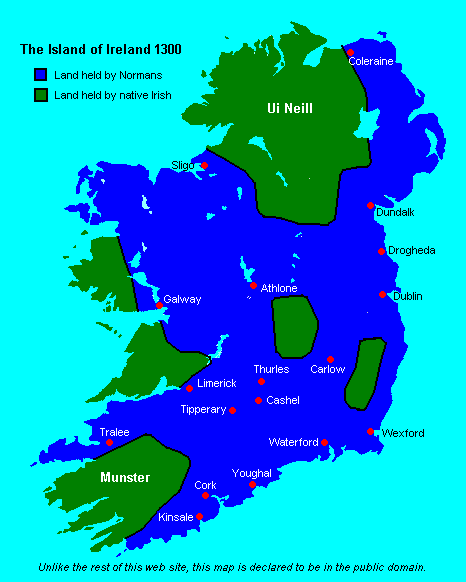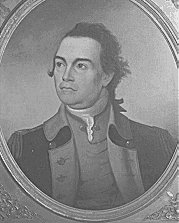|
Flight Of The Wild Geese
The Flight of the Wild Geese was the departure of an Irish Jacobite army under the command of Patrick Sarsfield from Ireland to France, as agreed in the Treaty of Limerick on 3 October 1691, following the end of the Williamite War in Ireland. More broadly, the term Wild Geese is used in Irish history to refer to Irish soldiers who left to serve in continental European armies in the 16th, 17th and 18th centuries. An earlier exodus in 1690, during the same war, had formed the French Irish Brigade, who are sometimes misdescribed as Wild Geese. By country Spanish service The first Irish troops to serve as a unit for a continental power formed an Irish regiment in the Spanish Army of Flanders in the Eighty Years' War in the 1590s. The regiment had been raised by an English Catholic, William Stanley, in Ireland from native Irish soldiers and mercenaries, whom the English authorities wanted out of the country. (See also Tudor conquest of Ireland). Stanley was given a commissio ... [...More Info...] [...Related Items...] OR: [Wikipedia] [Google] [Baidu] |
Flight Of The Earls
On 14 September [Old Style and New Style dates, O.S. 4 September] 1607, Irish earls Hugh O'Neill, Earl of Tyrone, and Rory O'Donnell, 1st Earl of Tyrconnell, permanently departed Rathmullan in Ireland for mainland Europe, accompanied by their families, household staff, followers and fellow nobility, numbering about ninety people. The earls were patriarchs of the two most powerful Irish clans, clans in Ulster (the O'Neill dynasty, O'Neill and O'Donnell dynasty, O'Donnell clans), and their permanent exile is seen to symbolise the end of Gaelic Ireland, Gaelic Irish society. This event is now known as the Flight of the Earls (). Both earls fought against The Crown, the English Crown in the Nine Years' War (Ireland), Nine Years' War, which ended with their surrender in 1603. Although the earls managed to retain their lands and titles, hostility towards them from English politicians gradually increased over time. The implementation of English law in Ireland led to a major land rights ... [...More Info...] [...Related Items...] OR: [Wikipedia] [Google] [Baidu] |
Dutch Republic
The United Provinces of the Netherlands, commonly referred to in historiography as the Dutch Republic, was a confederation that existed from 1579 until the Batavian Revolution in 1795. It was a predecessor state of the present-day Netherlands and the first independent Dutch people, Dutch nation state. The republic was established after seven Dutch provinces in the Spanish Netherlands Dutch Revolt, revolted against Spanish Empire, Spanish rule, forming a mutual alliance against Spain in 1579 (the Union of Utrecht) and declaring their independence in 1581 (the Act of Abjuration). The seven provinces it comprised were Lordship of Groningen, Groningen (present-day Groningen (province), Groningen), Lordship of Frisia, Frisia (present-day Friesland), Lordship of Overijssel, Overijssel (present-day Overijssel), Duchy of Guelders, Guelders (present-day Gelderland), lordship of Utrecht, Utrecht (present-day Utrecht (province), Utrecht), county of Holland, Holland (present-day North Holla ... [...More Info...] [...Related Items...] OR: [Wikipedia] [Google] [Baidu] |
Thomas Preston, 1st Viscount Tara
Thomas Preston, 1st Viscount Tara (1585October 1655) was an Irish soldier of the 17th century. After lengthy service as a mercenary in the Spanish Army, Preston returned to Ireland following the outbreak of the Rebellion of 1641. He was appointed to command the Leinster Army of the Irish Confederacy, enjoying some success as well as a number of heavy defeats such as the Battle of Dungans Hill in 1647 where his army was largely destroyed. Like other Confederate leaders, Preston was a Catholic Royalist. He remained in close contact with the Lord Lieutenant the Marquess of Ormonde, and was a strong supporter of an alliance between Confederates and Royalists against the English Republicans. Following the Cromwellian conquest of Ireland, he left for France where he joined the Royalist Court-in-exile and was made Viscount Tara by Charles II. Lineage Preston was a descendant of Robert Preston, 1st Baron Gormanston, who in 1363 purchased the lands of Gormanston, County Meath, and ... [...More Info...] [...Related Items...] OR: [Wikipedia] [Google] [Baidu] |
Old English (Ireland)
Norman Irish or Hiberno-Normans (; ) is a modern term for the descendants of Normans, Norman settlers who arrived during the Anglo-Norman invasion of Ireland in the 12th century. Most came from Anglo-Normans, England and Cambro-Normans, Wales. They are distinguished from the native Gaelic Ireland, Gaelic Irish; although some Normans eventually became Gaelicised. The Hiberno-Normans were a feudal aristocracy and merchant oligarchy who controlled the Lordship of Ireland. The Hiberno-Normans were associated with the Gregorian Reform of the Catholic Church in Ireland and contributed to the emergence of a Hiberno-English dialect. Some of the most prominent Hiberno-Norman families were the House of Burke, Burkes (de Burghs), Butler dynasty, Butlers, and FitzGerald dynasty, FitzGeralds. One of the most common Irish surnames, Walsh (surname), Walsh, derives from Welsh Normans who arrived in Ireland as part of this group. Some Norman families were said to have become "more Irish than t ... [...More Info...] [...Related Items...] OR: [Wikipedia] [Google] [Baidu] |
Roman Catholics
The Catholic Church (), also known as the Roman Catholic Church, is the largest Christian church, with 1.27 to 1.41 billion baptized Catholics worldwide as of 2025. It is among the world's oldest and largest international institutions and has played a prominent role in the history and development of Western civilization. O'Collins, p. v (preface). The church consists of 24 ''sui iuris'' (autonomous) churches, including the Latin Church and 23 Eastern Catholic Churches, which comprise almost 3,500 dioceses and eparchies around the world, each overseen by one or more bishops. The pope, who is the bishop of Rome, is the chief pastor of the church. The core beliefs of Catholicism are found in the Nicene Creed. The Catholic Church teaches that it is the one, holy, catholic and apostolic church founded by Jesus Christ in his Great Commission, that its bishops are the successors of Christ's apostles, and that the pope is the successor of Saint Peter, upon whom ... [...More Info...] [...Related Items...] OR: [Wikipedia] [Google] [Baidu] |
Hugh Dubh O'Neill
Hugh Dubh O'Neill, 5th Earl of Tyrone ("Black Hugh", meaning "black-haired" or "dark tempered") (1611–1660) was an Irish soldier of the 17th century. He is best known for his participation in the Irish Confederate Wars and in particular his defence of Clonmel in 1650. O'Neill was a member of the O'Neill dynasty, the leaders of which left Ireland in the flight of the Earls in 1607. Hugh Dubh's father, Art Óg O'Neill, was among those exiles who made careers for themselves in the Spanish Army of Flanders. Hugh Dubh was, as a result, born in Brussels in 1611 and grew up in the Irish military community there, becoming a professional soldier and serving in the Irish regiment of the Spanish army in Flanders during the Eighty Years' War against the United Provinces of the Netherlands. In 1642, his uncle, Owen Roe O'Neill, organised the return of 300 Irish officers in the Spanish service to Ireland to support the Irish Rebellion of 1641. O'Neill's men became the nucleus of the Ulste ... [...More Info...] [...Related Items...] OR: [Wikipedia] [Google] [Baidu] |
Owen Roe O'Neill
Owen Roe O'Neill ( Irish: ''Eoghan Ruadh Ó Néill;'' – 6 November 1649) was a Gaelic Irish soldier and one of the most famous of the O'Neill dynasty of Ulster. O'Neill left Ireland at a young age and spent most of his life as a mercenary in the Spanish Army serving against the Dutch in Flanders during the Eighty Years' War. After the Irish Rebellion of 1641, O'Neill returned and took command of the Irish Confederate Ulster Army. He is known for his victory at the Battle of Benburb in 1646. O'Neill's later years were marked by infighting amongst the Confederates, and in 1647 he led his army to seize power in the capital of Kilkenny. His troops clashed with rival forces of the Confederacy, leading to O'Neill forming a temporary alliance with Charles Coote's English Parliamentary forces in Ulster. He initially rejected a treaty of alliance between the Confederates and the Irish Royalists, but faced with the Cromwellian invasion he changed his mind. O'Neill died shortly a ... [...More Info...] [...Related Items...] OR: [Wikipedia] [Google] [Baidu] |
Ulster
Ulster (; or ; or ''Ulster'') is one of the four traditional or historic provinces of Ireland, Irish provinces. It is made up of nine Counties of Ireland, counties: six of these constitute Northern Ireland (a part of the United Kingdom); the remaining three are in the Republic of Ireland. It is the second-largest (after Munster) and second-most populous (after Leinster) of Ireland's four traditional provinces, with Belfast being its biggest city. Unlike the other provinces, Ulster has a high percentage of Protestantism in Ireland, Protestants, making up almost half of its population. English is the main language and Ulster English the main dialect. A minority also speak Irish, and there are (Irish-speaking regions) in County Donegal which is home to a quarter of the total Gaeltacht population of the Republic of Ireland. There are also large Irish-speaking networks in southern County Londonderry and in the Gaeltacht Quarter, Belfast. Ulster Scots dialect, Ulster-Scots is al ... [...More Info...] [...Related Items...] OR: [Wikipedia] [Google] [Baidu] |
Gallowglass
The Gallowglass (also spelled galloglass, gallowglas or galloglas; from meaning "foreign warriors") were a class of elite mercenary warriors who were principally members of the Norse-Gaelic clans of Ireland and Scotland between the mid 13th century and late 16th century. It originally applied to Scots, who shared a common background and language with the Irish, but as they were descendants of 10th-century Norse settlers who had intermarried with the local population in western Scotland, the Irish called them ("foreign Gaels"). An early family of gallowglasses was the MacSweeneys, settled by the O'Donnells in north Donegal. These were followed by MacDonnells, MacCabes and several other groups settled by powerful Irish nobles in different areas. The gallowglasses were attractive as heavily armoured, trained infantry to be relied upon as a strong defence for holding a position, unlike most Irish foot soldiers, who were less well armoured than the typical Irish noble w ... [...More Info...] [...Related Items...] OR: [Wikipedia] [Google] [Baidu] |
Donal Cam O'Sullivan Beare
Donal Cam O'Sullivan Beare, Prince of Beare, 1st Count of Berehaven (; 1560 – 16 July 1618) was an Irish nobleman and soldier who was the last independent Chief of the Name of Clan O'Sullivan. He was thus the last ''O'Sullivan Beare'', a title of the Gaelic nobility of Ireland, and Lord of the Beara Peninsula in the southwest of Ireland during the early seventeenth century, when the English Crown was attempting to secure their rule over the whole island. Early life Donal Cam O'Sullivan Beare was born in 1560. His father was killed in 1563, but he was considered too young to inherit and the clan's leadership passed to the chief's surviving brother Eoin, who was confirmed by Dublin Castle administration with the title Lord of Beare and Bantry. In order to consolidate his position, Eoin accepted the authority of Queen Elizabeth I and was knighted, thus becoming Sir Eoin. In 1587, Donal asserted his own claim to leadership of the clan, petitioning the Dublin Castle administrat ... [...More Info...] [...Related Items...] OR: [Wikipedia] [Google] [Baidu] |
Rory O'Donnell, 1st Earl Of Tyrconnell
Rory O'Donnell, 1st Earl of Tyrconnell (Irish language, Irish: ''Rudhraighe'' ''Ó Domhnaill''; 1575 – 28 July 1608), was an Gaelic Ireland, Irish Gaelic lord and the last lord of Tyrconnell prior to the Plantation of Ulster. He succeeded his older brother Hugh Roe O'Donnell and in 1603 became the first to be styled the Earl of Tyrconnell. In 1607, following their defeat in the Nine Years' War (Ireland), Nine Years' War, Tyrconnell and his wartime ally Hugh O'Neill, Earl of Tyrone, Flight of the Earls, fled Ireland for mainland Europe. Tyrconnell died of a fever shortly after settling in Rome. Early life Born in 1575, Rory O'Donnell was the second son of Irish lord Sir Hugh O'Donnell, Sir Hugh McManus O'Donnell and his second wife Iníon Dubh. Hugh McManus reigned as Chief of the Name and Tighearna, Lord of Tyrconnell from 1566 until his 1592 abdication in favour of Rory's older brother Hugh Roe O'Donnell. Iníon Dubh was a Scottish aristocrat of Clan MacDonald of Dunnyveg. R ... [...More Info...] [...Related Items...] OR: [Wikipedia] [Google] [Baidu] |
Hugh O'Neill, 2nd Earl Of Tyrone
Hugh O'Neill, Earl of Tyrone (; – 20 July 1616) was an Irish lord and key figure of the Nine Years' War (Ireland), Nine Years' War. Known as the "Great Earl", he led the confederacy of Irish lords against the Crown, the English Crown in resistance to the Tudor conquest of Ireland under Queen He was born into the O'Neill dynasty, O'Neill clan, Tír Eoghain's ruling noble family, during a violent succession conflict which saw Matthew O'Neill, 1st Baron Dungannon, his father assassinated. At the age of eight he was relocated to the Pale where he was raised by an English family. Although the Crown hoped to mold him into a puppet ruler sympathetic to the English government, by the 1570s he had built a strong network of both British and Irish contacts which he utilised for his pursuit of political power. Through the early 1590s, Tyrone secretly supported rebellions against the Crown's advances into Ulster whilst publicly maintaining a loyal appearance. He regularly deceived go ... [...More Info...] [...Related Items...] OR: [Wikipedia] [Google] [Baidu] |







